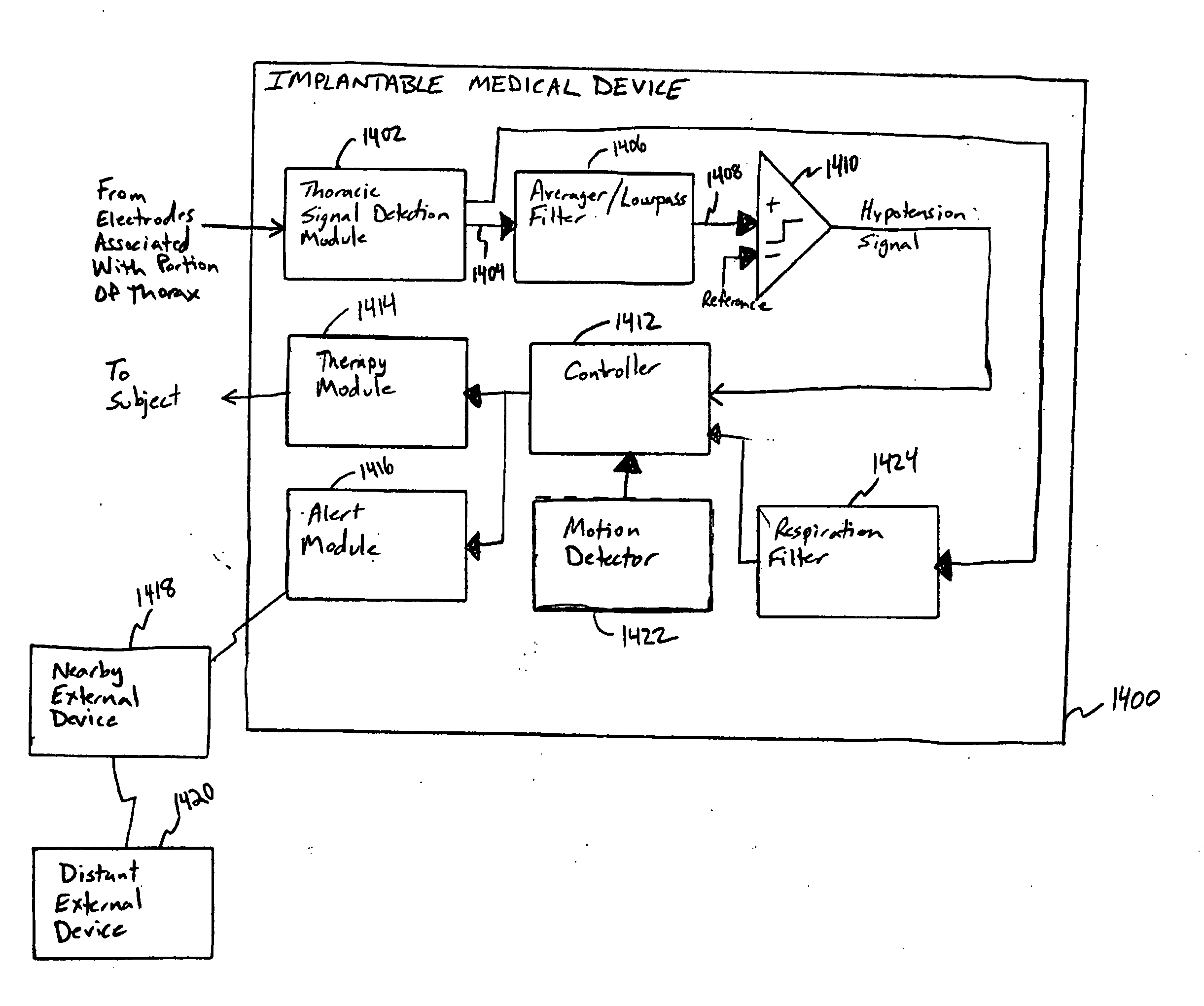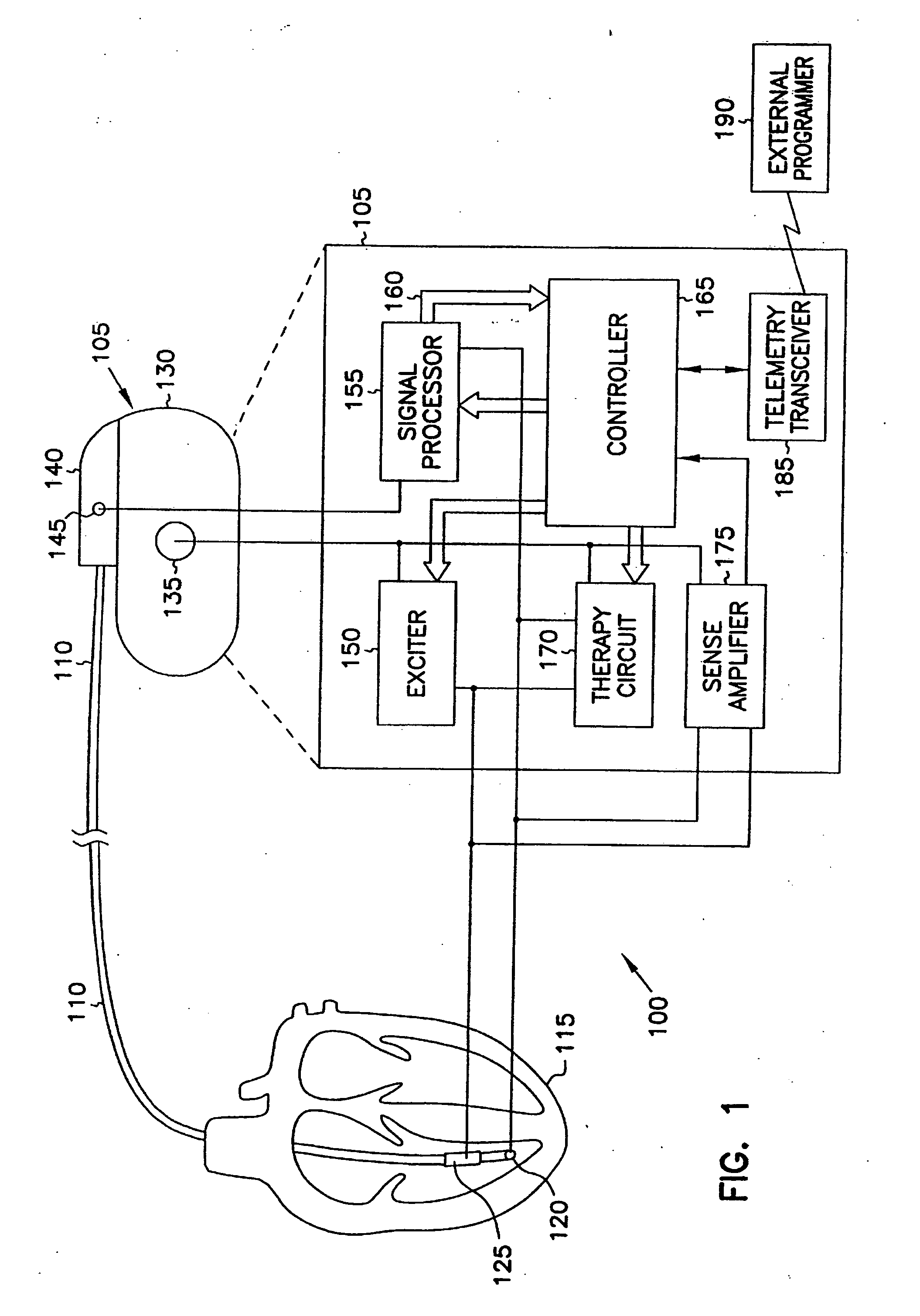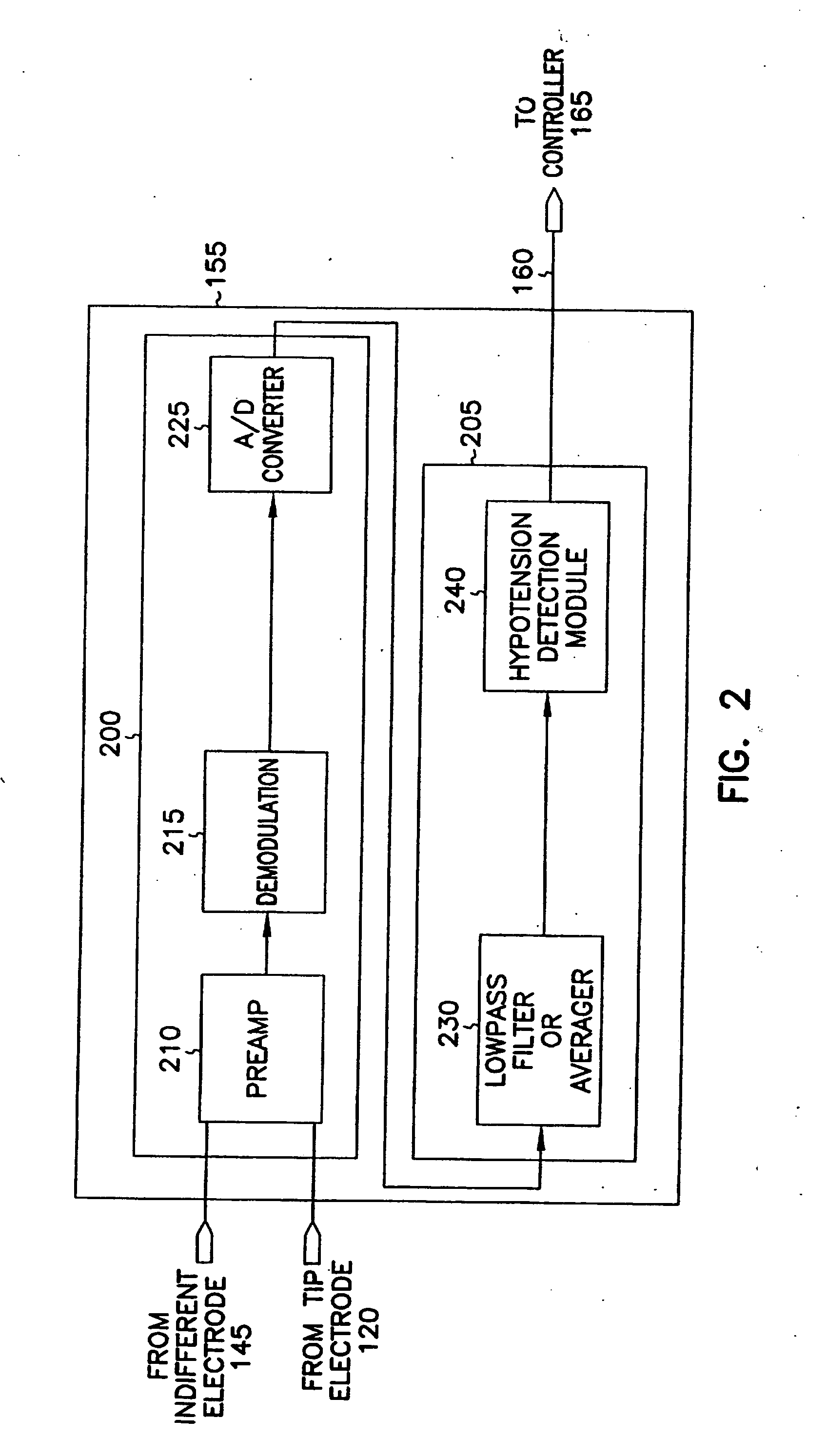Systems and methods for hypotension
a technology of system and method, applied in the field of medical devices and methods, can solve the problems of reducing blood circulation, reducing blood circulation, and drug therapy not always effective in treating certain patients' arrhythmias
- Summary
- Abstract
- Description
- Claims
- Application Information
AI Technical Summary
Problems solved by technology
Method used
Image
Examples
example 1
Electrode Configuration and Top-Level Block Diagram
[0030]FIG. 1 is a schematic / block diagram illustrating generally, by way of example, but not by way of limitation, one embodiment of a cardiac rhythm management system 100 according to the present invention. In this embodiment, system 100 includes, among other things, cardiac rhythm management device 105 and leadwire (“lead”) 110 for communicating signals between device 105 and a portion of a living organism, such as heart 115. Embodiments of device 105 include, among other things, bradycardia and antitachycardia pacemakers, cardioverters, defibrillators, combination pacemaker / defibrillators, drug delivery devices, and any other implantable or external cardiac rhythm management apparatus capable of providing therapy to heart 115. System 100 may also include additional components such as, for example, a remote programmer 190 capable of communicating with device 105 via a transmitter or receiver, such as telemetry transceiver 185.
[0...
example 2
[0072]FIG. 11 is a schematic / block diagram example of portions of a cardiac rhythm management system 1100 and portions of an environment in which it is used. In this example, system 1100 includes, among other things, a cardiac rhythm management device 1102 and leadwire (“lead”) 1104, which is coupled to device 1102 for communicating one or more signals between device 1102 and a portion of a living organism or other subject, such as heart 1106. Examples of device 1102 include, among other things, bradycardia and antitachycardia pacemakers, cardioverters, defibrillators, combination pacemaker / defibrillators, drug delivery devices, and any other implantable or external cardiac rhythm management apparatus capable of providing therapy to heart 1106. System 1100 may also include additional components such as, for example, an external or other remote interface 1108 capable of communicating with device 1102.
[0073] In this example, device 1102 includes, among other things, a microprocessor ...
example 3
[0087]FIG. 14 is a block diagram illustrating generally portions of an implantable medical device 1400 that receives a thoracic impedance signal from electrodes associated with a portion of a subject's thorax. The thoracic impedance signal is received at thoracic signal detection module 1402. In this example, the resulting detected thoracic signal output at 1404 is received at an input of the averager / lowpass filter 1406, which attenuates frequency components of the detected thoracic impedance signal that are not indicative of hypotension (e.g., respiration, cardiac stroke components), and which passes or amplifies frequency components of the detected thoracic impedance signal that are indicative of hypotension. The resulting signal is output at node 1408 to a comparator circuit 1410, where it is compared to a reference. The comparator circuit 1410 outputs a resulting signal indicating whether or the degree to which hypotension is present.
[0088] This hypotension signal is received ...
PUM
 Login to View More
Login to View More Abstract
Description
Claims
Application Information
 Login to View More
Login to View More - R&D
- Intellectual Property
- Life Sciences
- Materials
- Tech Scout
- Unparalleled Data Quality
- Higher Quality Content
- 60% Fewer Hallucinations
Browse by: Latest US Patents, China's latest patents, Technical Efficacy Thesaurus, Application Domain, Technology Topic, Popular Technical Reports.
© 2025 PatSnap. All rights reserved.Legal|Privacy policy|Modern Slavery Act Transparency Statement|Sitemap|About US| Contact US: help@patsnap.com



